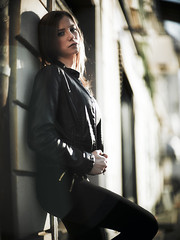MarkoRepse
Member
Apologies to anyone if this has already been discussed
Pham is correct about the effective fstop. Since I cannot focus at infinity it is as if I am using a thin extension tube on its native camera (but with a bigger sensor). Moving the lens further away reduces the effective aperture. However, to get to infinity requires moving the lens closer by a few millimeters at most. Unfortunately this is not possible. But in practice this amount is negligible and I very much doubt anyone would notice any difference. In any case, I am superbly happy with the results. I do not see how theoretical perfection would improve my photography.
Sergei, if I understand you correctly, unfortunately I do not think that would work. Because if I move the lens by 2-3mm further away than it is currently, the max focusing distance drops to maybe 1m. I had it like this for a while in an earlier stage and it was not very useful. If you succeed with your petzvals, do let us know
Because if I move the lens by 2-3mm further away than it is currently, the max focusing distance drops to maybe 1m. I had it like this for a while in an earlier stage and it was not very useful. If you succeed with your petzvals, do let us know 
Pham is correct about the effective fstop. Since I cannot focus at infinity it is as if I am using a thin extension tube on its native camera (but with a bigger sensor). Moving the lens further away reduces the effective aperture. However, to get to infinity requires moving the lens closer by a few millimeters at most. Unfortunately this is not possible. But in practice this amount is negligible and I very much doubt anyone would notice any difference. In any case, I am superbly happy with the results. I do not see how theoretical perfection would improve my photography.
Vivek, maybe I overstated the difficulty of focusing. It is indeed difficult to focus at 6m, however the same can be said for any lens. I will probably get a magnifier as it should help. Closer in and with good light its not a problem. I actually shot the whole 'city' series handheld. Practically impossible with the Hartblei.Marko,
One question I have is why you had to hack the lens and the SLR camera to get them to working? Why did you not consider the other possibilities that does not include a mirror? Now you know that the mirror isn't all that useful.
Sergei, if I understand you correctly, unfortunately I do not think that would work.


